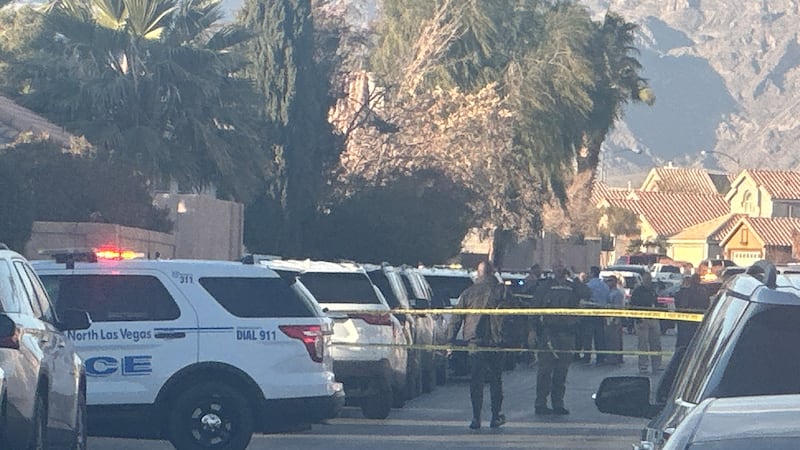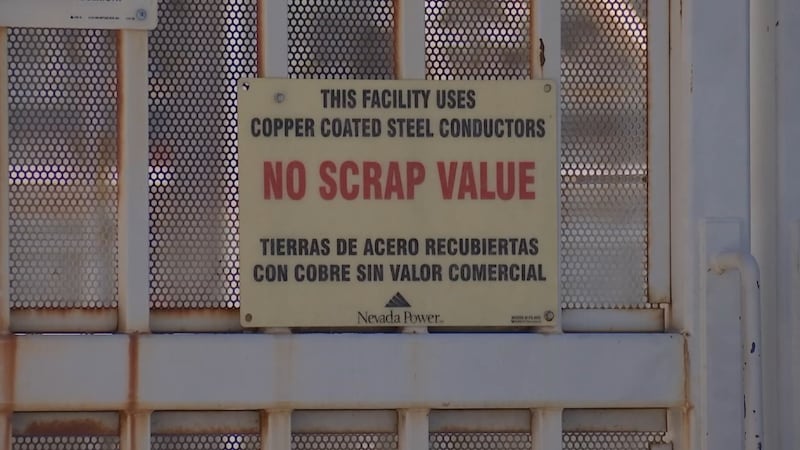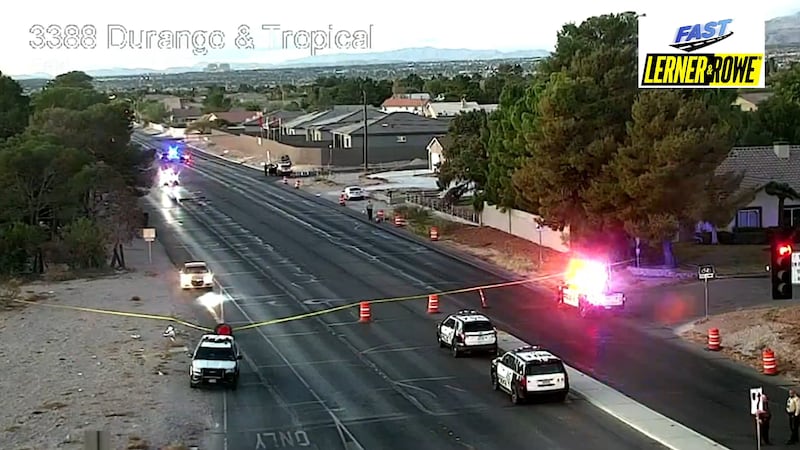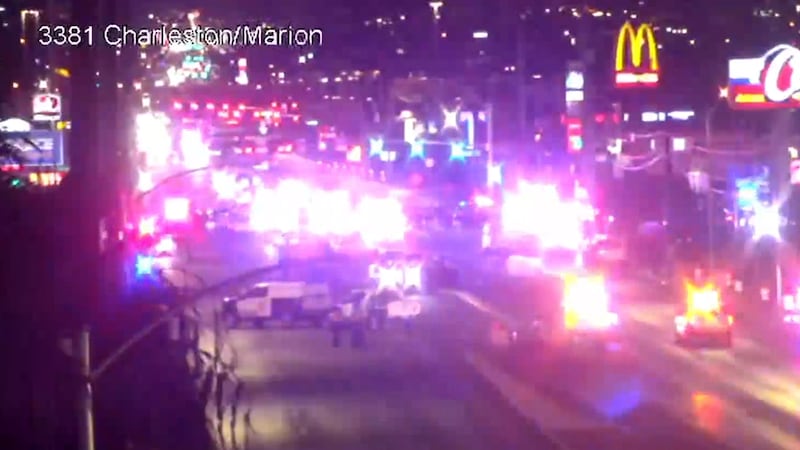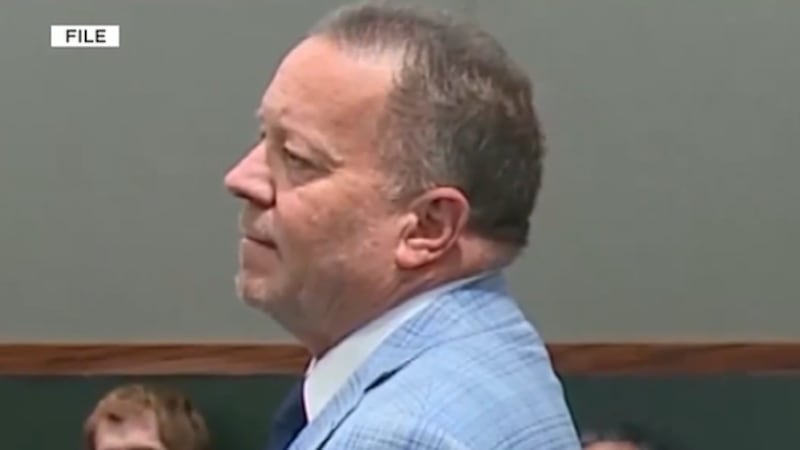FBI Las Vegas gives insight into Cybertruck explosion investigation
LAS VEGAS, Nev. (FOX5) - The Cybertruck explosion in front of Trump Hotel, is still being pieced together by several law enforcement agencies.
On New Years Day, 37-year-old Mathew Livelsberger drove a Cybertruck filled with explosives to the front of Trump Hotel.
Livelsberger shot himself before setting off the explosives.
Nearly, a month later FOX5 sat down with Spencer Evans, the Special Agent in Charge for the FBI Las Vegas division for an exclusive interview.
“Certainly no one would have predicted that the first of January someone was going to take a vehicle and improvise a explosion device and explode it in front of Trump tower,” Evans said.
Evans said within hours, his team went from covering a New Years Eve celebration to an explosion.
The magnitude of the incident required the help of Bureau of Alcohol, Tobacco, Firearms and Explosives (ATF), the FBI and Las Vegas Metro Police.
“Like any investigation you start with basic building blocks of trying to figure out what happened, who was involved, and then the why it happened comes a little bit later,” Evans said.
As law enforcement tried to get the answers to those questions, they did know there was a deadly attack in New Orleans just hours before.
“FBI HQ was monitoring both incidents simultaneously briefing all the way up to the President of the United States and President elect at the time, who obviously had a lot of interest in what was going on,” Evans said.
Through their investigation, authorities found Livelsberger was a decorated veteran on leave and did not have a criminal history.
“The unfortunate reality here is if you were to ask somebody on December 31st what we know about Livelsberger, the FBI had no information and it was just that he was a highly decorated green beret, who had served his country 5 combat tours. The more we find on his background it was somebody that had done honorable service for the United States but not on the radar of law enforcement at all,” Evans said.
Overnight their investigation went international, leading the FBI to Germany where Livelsberger lived.
“That was helpful to interview folks overseas and quickly bring all that information back to our local investigation to make sense of what we exactly had and didn’t have,” Evans said.
According to Evans, there is a laptop and thumb drive from oversees that still needs to be looked at.
However, his thoughts and questions leading up to the explosion were captured on ChatGPT, but nothing was flagged.
“We play catch up I would say in law enforcement we are always trying to figure out what the bad guys are using,” Evans said.
Here is more of Victoria’s interview with Evans.
Victoria: The suspect’s manifesto, claimed that it wasn’t a terrorist attack? Can you take his word for it?
Evans: So, we never take a subject’s word for it because there is obviously other factors and an investigation that underlies all of this. The challenging part of this investigation is that you get so much conflicting information. The subjects own writings seem to suggest anger about the government, guilt he had about things he had done in the military and information about alcohol and being high on marijuana so there’s a lot of thing going through somebody’s mind so its difficult to pin point at that time exactly what he was looking to do and exactly why. What we found to date, based on the movements of the subject, what people have told us about him and his own writings, seems to suggest that he wanted to kill himself. He wanted to do it in an elaborate way. He wanted there to be a significant splash about it, but he was also taking deliberate measures to make sure other people weren’t necessarily killed.
Victoria: Same day we have two different attacks, two people of a veteran back ground, car from the same company. What did you guys find that would make the public believe these two incidents are not related?
Evans: There was a couple key differences, one New Orleans case it became clear very early on that it was an act of international terrorism that subject pledged allegiance to ISIS, deliberately killed other folks had writings that indicated his intent was to kill others so it became very apparent, that’s what his intent was. In our case none of the factors were there, going back looking at the two cases the fact that they occurred within hours of each other, we found no connection between the subjects besides the coincidental references, there was no telephone activity, no email or electronic communications, with dozens of interviews with family and former military there was no indication they knew each other.
Victoria: Does that worry you at all that someone who had committed something like this wasn’t on your radar wasn’t on anyone’s radar?
Evans: I think the challenge that we face you know violent acts these days, they don’t often have some telltale very clear-cut pattern that leads you to believe that someone’s going to do it, you can be vigilant but it’s hard to tell what’s on somebody’s mind, what are the contributing factors? Especially a case like his, it seemed like there were a variety of things that were coming to bare at once. We know there were personal issues going on in the complicated family dynamic, 5 combat tours, and the protentional PTSD implications. The Army had told us he had been receiving treatment in that regard, there may have been medication involved. You add all of these together, any one of which would be difficult to detect on its own and it might not be until after the fact, that you paint a more comprehensive picture of what you think happened.
Victoria: Is there something in particular you are looking for in the rest of the devices that still need to be scanned?
Evans: Anything that provides additional insight into what Liveslberger was thinking, at the time is probably the most valuable. We haven’t seen at this point that there was anyone else involved beside him. That it was a terrorist attack would require that it was done in a political goal or objective, that remains to be seen because elements that would suggest oh it’s at the Trump Tower, and it’s a Cybertruck but again the subject said he is going to be killing himself, that he was under the influence when he was doing these writings. It becomes convoluted so we are looking for something that would provide that additional clarity.
Victoria: Correct me if I’m wrong, as of right now you don’t have anything to suggest it was act of terrorism?
Evans: We certainly have things that would suggest it might be terrorism. He made no bones about being frustrated about parts of the government, being guilty about war crimes being committed, but to definitively say he did this particular thing in violation of federal law because he was trying to drive this particular social goal, which is really kind of the definition of terrorism, or domestic terrorism that remains undetermined. We can conclusively say based on the all the information there is no connection to international terrorism, that it was behind done on behalf of ISIS like we saw in the New Orleans incident. There’s not a list of domestic terrorist organization, we don’t label them as such. Its also not a violation of federal law you can be charged with like you can on the international terrorism side so the motivation of the subject even if the subject and what they were thinking at the time of the violent act, becomes paramount to determine whether or not it actually is domestic terrorism. Had he survived, he would be charged with the exact same thing as there isn’t a charging statute for domestic terrorism.
Copyright 2025 KVVU. All rights reserved.

